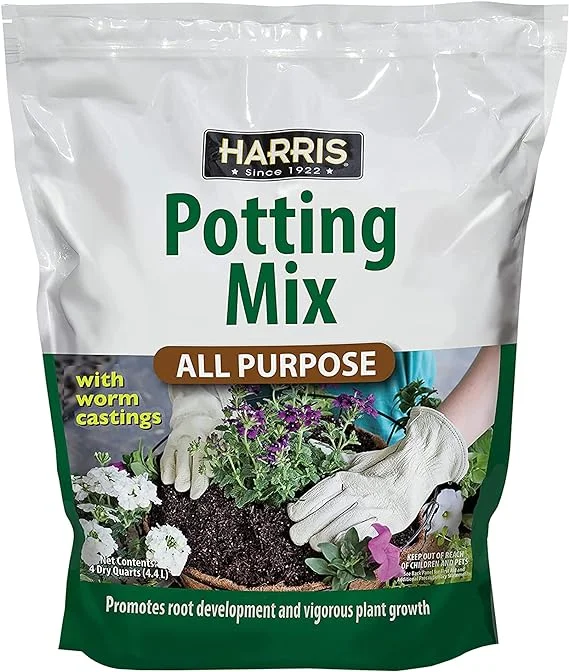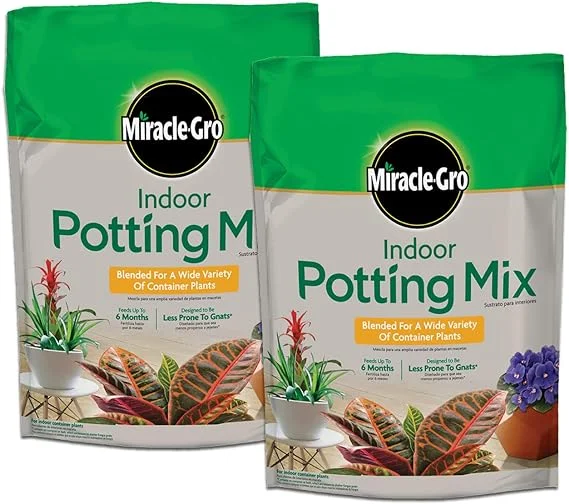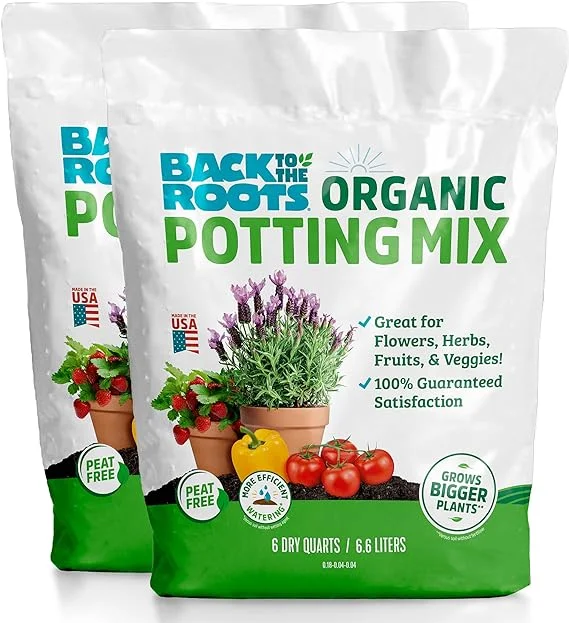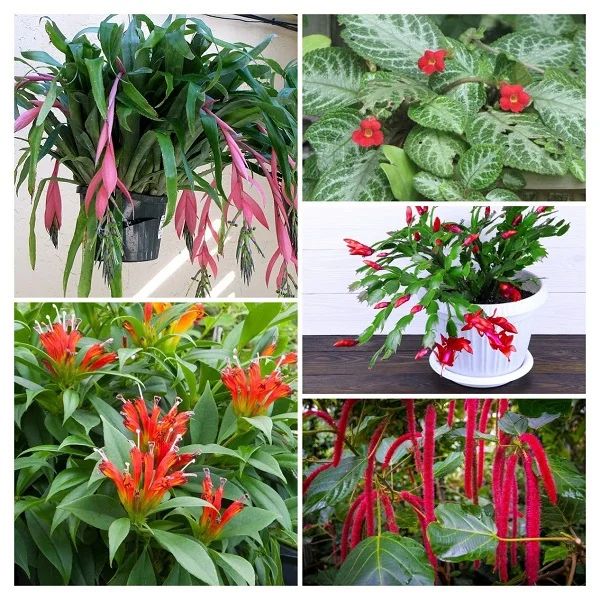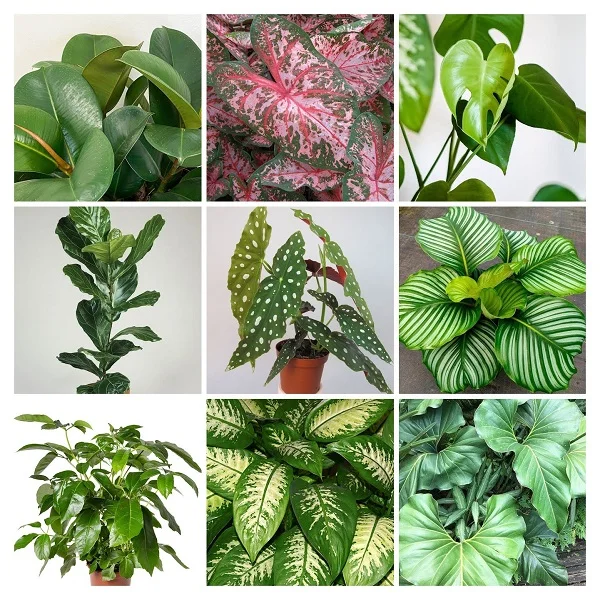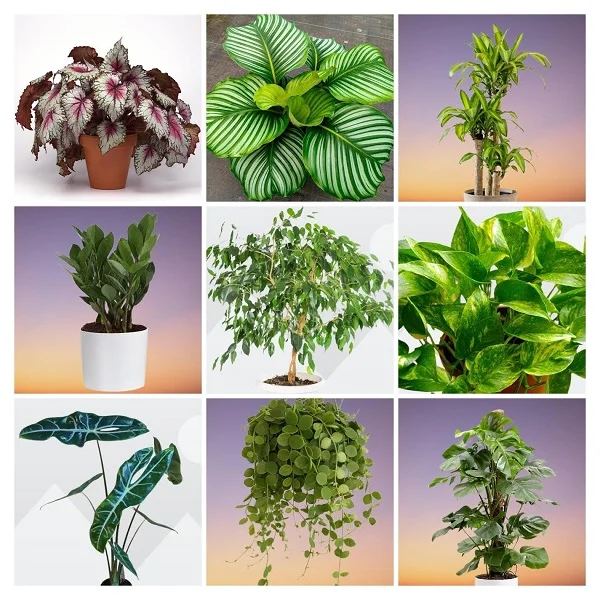Begonia coccinea (Angel Wing Begonia) Indoor Care, Propagation, Problems & Solutions
Some links in this post may be affiliate links
Begonia coccinea (Angel Wing Begonia) grows best in bright indirect light, average warmth and humidity, and consistently moist, rich, well-drained soil with weekly feeding in the growing season.
Begonia coccinea also called Scarlet Begonia is one of the popular Begonia varieties. Angel Wing Begonia is an evergreen, shrubby, flowering plant which bears large, glossy, red-margined leaves. The leaves are 'angel wing' shaped and hence the common name.
Scarlet Begonia like Polka Dot Begonia (Begonia maculata) has the advantage of keeping its beautiful 'Angel Wing' leaves through out the year. It is one of the popular cane-stemmed Begonias and is easy to grow and propagate.
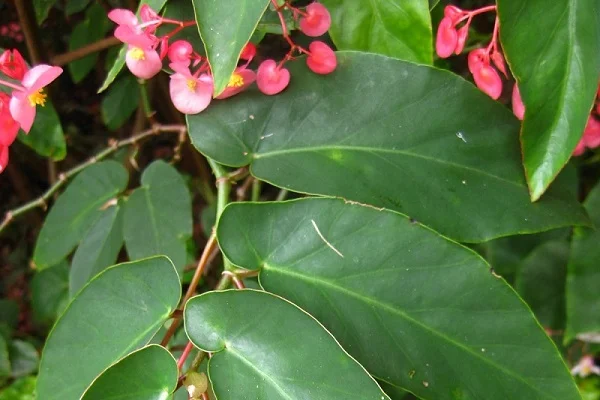
Botanical name: Begonia coccinea
Family: Begoniaceae
Common names: Angel Wing Begonia, Scarlet Begonia
Origin
Begonia coccinea is native to the Atlantic Forest of Brazil, distributed in Rio de Janeiro and Espírito Santo.
Size
Scarlet Begonia can reach the height of 6 feet or more if left unpruned. On account of its size and ability to adapt to indoor growing conditions, is one of the best indoors trees for the home.
Flowers
Begonia coccinea bears large clusters of waxy flowers which hang beautifully from the stems. The flowers come in red, white, orange and pink. Angel Wing Begonia like Begonia semperflorens (Wax Begonia) is among the best flowering plants for indoor growing.
Is Begonia coccinea toxic?
Yes. All parts of Begonia coccinea and especially the roots are considered toxic to pets as indicated by ASPCA. If ingested they may cause burning in the mouth and throat, vomiting, diarrhea and abdominal pains. Keep the plant away from the reach of children and pets to avoid any mishaps.
Where to Buy
Would you like to add this beauty to your collection? You may obtain these plants online from Etsy (Link to Etsy).
How to Care for Begonia coccinea Indoors
To care for Begonia coccinea indoors, provide bright indirect light (dappled light), warmth of 18-260C, humidity of 50-55% and consistently moist, rich, well-drained soil with weekly feeding during the growing season.
Angel Wing Begonia requires regular pruning to keep it neat, reduce pest infestations and rejuvenate growth. Repotting is needed when it becomes extremely pot-bound as it grows best when slightly root-bound. Keep reading for a detailed account on the best growing conditions and how to achieve them.
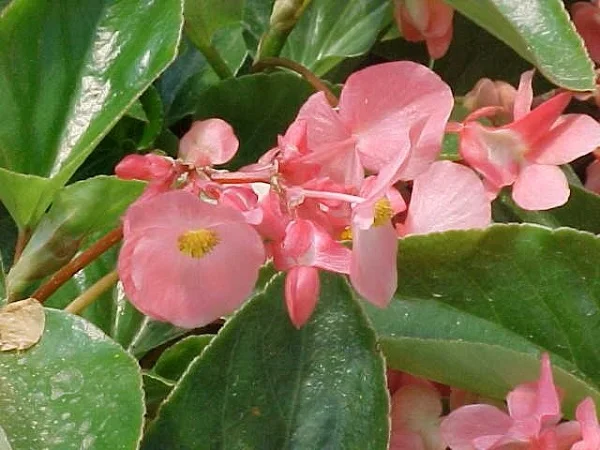
Light Requirements
Does Begonia coccinea need direct sunlight?
No. Begonia coccinea grows best in bright indirect light away from direct sunlight (filtered light) to avoid scorching the leaves.
Inadequate light will result in a leggy plant and reduced flowering while too intense light causes the leaves to curl and turn brown. Where the natural lighting is not sufficient, you may grow Scarlet Begonia under a full spectrum grow light to prevent legginess.
Turn the pot regularly to ensure that the plant receives light on all sides for uniform growth and prevent lopsided growth.
Watering
How often should I water Begonia coccinea?
For optimum growth of Begonia coccinea, keep the soil moist in spring and summer but allow the soil to dry out slightly between waterings. Avoid overwatering to prevent rotting, yellowing, leaf drop and flowerbud drop.
Decrease watering in fall and winter as growth is minimal at this time. Do not allow the soil to dry out completely to prevent wilting, drooping, leaf loss and flowerbud drop.
Use water that is free of chlorine to avoid browning of leaf edges and tips. Confirm that the water is at room temperature to prevent coldshock which can result in stunted growth and leaf fall.
Make sure the soil is well-draining and the pot has a drainage hole to prevent waterlogging as it may result in root-rot and death of the plant.
Temperature & Humidity
Begonia coccinea thrives in an average warmth of 18-260C. Keep it away from sources of drafts to avoid sudden changes in temperature which can cause stunted growth, leaf drop and flowerbud drop.
Angel Wing Begonia flourishes in a humidity of 50-55%. Where the room temperatures are too high, causing the air to be too dry, increase humidity by setting the pot on a wet pebble tray, grouping the plants together or use of a cool mist humidifier. Do not mist the plant and maintain good airflow to minimize fungal infestations.
Potting Mix
The best potting mix for Begonia coccinea should be rich in organic matter and free-draining to prevent it from getting soggy while providing the required nutrients. A blend of 2 parts all purpose potting mix and 1 part perlite is ideal for this plant.
Fertilizer
Feed Begonia coccinea with a balanced, liquid fertilizer weekly in spring and summer for lush growth. To promote blooming, apply a phosphorous-rich, water-soluble fertilizer weekly when the buds begin to form.
Withhold feeding in fall and winter as growth is minimal at this time, therefore, the plant does not need it. Feeding it at this time may result in fertilizer burn and death of the plant.
Repotting
Repot Begonia coccinea at the beginning of the growing period (spring to early summer), only if the plant has become extremely pot-bound or is too large for the pot as it prefers to be slightly root-bound.
Use a pot 1 size larger than the current one. Ensure that the pot has a drainage hole and the soil is free-draining to avoid root-rot and eventual death of the plant.
Do not repot a flowering Scarlet Begonia as the shock of repotting will cut short the flowering. Take a look at these self watering planters with drainage hole on Amazon.
Pruning & Grooming
Pruning Begonia coccinea is easy. Remove the dead flowers, yellow and dead leaves to keep the plant neat and tidy. Do not pinch the growing buds.
Cutback the bare stems with a sharp, clean pair of pruning scissors at the beginning of the growing season to rejuvenate growth. The foliage emanating from pruning can be used to propagate new plants.
Occasionally clean the leaves by damp-wiping with a soft cloth to get rid of dust and discourage pest infestations.
Begonia coccinea Propagation
Begonia coccinea is propagated from stem cuttings at the beginning of the growing period (spring to early summer) when in active growth to encourage rooting. The cuttings can be rooted either in water or in soil.
1. Propagating Begonia coccinea from stem cuttings in water
- Select a healthy stem (4–6 inches long) with at least two leaves and 2-3 leaf nodes.
- With a sterilized scissors cut just below a leaf node as this where new growth will come from.
- Strip off the lower leaves, leaving only the top ones.
- Dip the lower cut end in a rooting hormone to hasten establishment.
- Place the cuttings in a jar of plain water or in a propagation station. Change the water every 5-7 days.
- Position the set up in a warm, well-lit place away from direct sunlight to avoid scorching.
- When the roots are about 2-3 inches, transfer the cuttings into individual pots in moist, rooting soil.
- Maintain the soil moist until new growth emerges.
- Allow the new plant to be well established after which you can begin routine care.
2. Propagating Begonia coccinea from stem cuttings
- Select a healthy stem (4–6 inches long) with at least two leaves and two leaf nodes.
- With a sterilized pruning scissors cut just below a leaf node as this where new growth will come from.
- Strip off the lower leaves, leaving only the top ones.
- Dip the lower cut end in a rooting hormone to hasten establishment.
- Fill a small pot (6-8 inches) with a well-draining rooting mix and moisten it slightly.
- Insert 2-3 inches of the lower cut end of the cutting in the moist rooting mix.
- Place the set up in a warm, well-lit place away from direct sunlight to avoid scorching.
- Maintain the soil moist until new growth emerges. Roots will develop in 2–4 weeks.
- Allow the new plant to be well established before transplanting after which you can begin routine care.
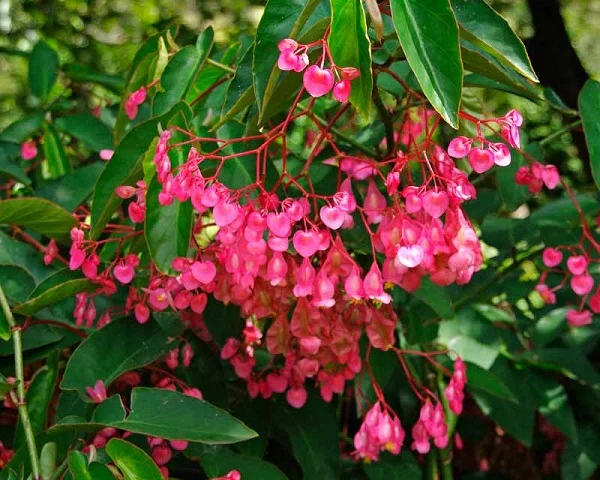
Begonia coccinea Problems & Remedies
Begonia coccinea (Angel Wing Begonia) problems are yellow leaves, leaf drop, flowerbud drop, plant dying, pests and diseases among others. Keep reading for more on these problems, their remedies and solutions.
Yellow leaves
The main causes of yellow leaves on Begonia coccinea are too little light, dry air, inconsistent watering, soggy soil and aging.
How to fix it
Remove such leaves by snipping them off at the base with a clean sharp knife or a pair of scissors.
Too little light: Position the plant in bright indirect light or use a grow light if the natural lighting is not adequate.
Dry air: Set the pot on a wet pebble tray, group the plants together, use a cool mist humidifier or grow the plant in a well-lit bathroom.
Inconsistent watering: Water only when the top 1-2 inches of soil dry out. Do not water on a schedule.
Soggy soil: Use well-draining soil and a pot that has a drainage hole.
Aging: It is natural for the old leaves to turn yellow and drop as the plant matures.
Leaf drop
Leaf drop on Begonia coccinea is caused by too little light, temperature stress, inconsistent watering, soggy soil or consistent use of cold water.
How to fix it
Too little light: Position the plant in a brighter place where it will receive bright indirect light or instal a grow light if the natural light is not enough.
Temperature stress: Keep the plant away from drafts to maintain a warmth of 18-260C, that is, a temperature that is comfortable for you is ideal for the plant.
Inconsistent watering: Do not water on a schedule. Water when the top 1-2 inches of soil feel dry to the touch.
Soggy soil: Ascertain that the soil is free-draining and the pot has a drainage hole.
Use of cold water: Water with room temperature water to avoid cold shock.
Flowerbud drop
Flowerbud drop on Begonia coccinea is caused by dry air, drafts, underwatering or watering with cold water.
How to fix it
Dry air: To elevate humidity, set the pot on a wet pebble tray, use a humidifier or grow the plant in a well-lit bathroom and other moist areas in the home.
Drafts: Keep the plant away from drafts originating from AC units, hot air vents, stoves, windy doors and others.
Underwatering: Maintain the soil consistently moist in spring and summer and slightly moist in fall and winter. Never allow the soil ball to dry out completely.
Use of cold water: Use water that is at room temperature water to avoid cold shock.
Pests
Common pests on Begonia coccinea are aphids and spider mites. Always ensure the plants are healthy at all times to minimize pest infestations.
How to fix it
- Isolate the affected plant to prevent spread to the other plants.
- Treat the plant with neem oil or an insecticidal soap. Ensure to follow the manufacturers' recommendations on the label.
- Regularly damp-wipe the leaves with a soft cloth to discourage the pests.
- Maintain the plant well pruned to discourage the pests.
- Set the pot on a wet pebble tray or group the plants together to increase humidity to depress the pests infestations.
Plant dying
There are three possible causes of plant collapse or death in Begonia coccinea.
One possible cause is stem-rot disease due to soggy soil which is a result of poor soil drainage.
Discard the affected plant to minimize spread to other plants as it cannot be saved. Always make sure that the soil is free-draining and the pot has a drainage hole to prevent the soil from getting soggy.
The second possible cause for plant collapse in Begonia coccinea is nematodes (root knot eelworm) which are characterized by swollen bumps on roots.
The third possible cause for plant collapse in Angel Wing Begonia is vine weevil which is characterized by tunnels in the rhizomes.
White powdery spots
White powdery spots in Begonia coccinea is an indication of infestation by powdery mildew which is promoted by overwet conditions coupled with poor air circulation.
Isolate the affected plant and cut off diseased leaves. Spray the plant with a systemic fungicide as per the manufacturer's instructions. Avoid damp conditions and low temperatures and improve air circulation.
Brown blotches which turn grey and moldy
Brown blotches which turn grey and moldy in Begonia coccinea is an indication of botrytis disease which is enhanced by overdamp conditions coupled with poor air circulation.
Isolate the affected plant and cut off the diseased parts. Avoid low light and overdamp conditions and improve ventilation.
Spray the plant with a systemic fungicide. Ensure all the parts of the plant are well covered with the fungicidal solution.
You liked it? Share on social media.
Related Content
Amazon Associates Disclosure
Homeplantsguide.com is a participant in the Amazon Services LLC Associates Program, an affiliate advertising program designed to provide a means for sites to earn advertising fees by advertising and linking to amazon.com.
